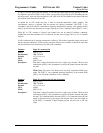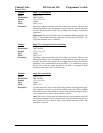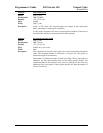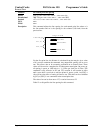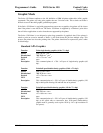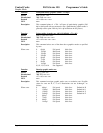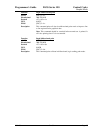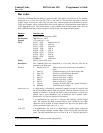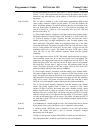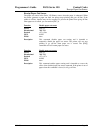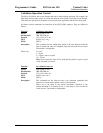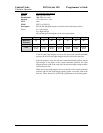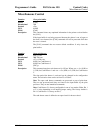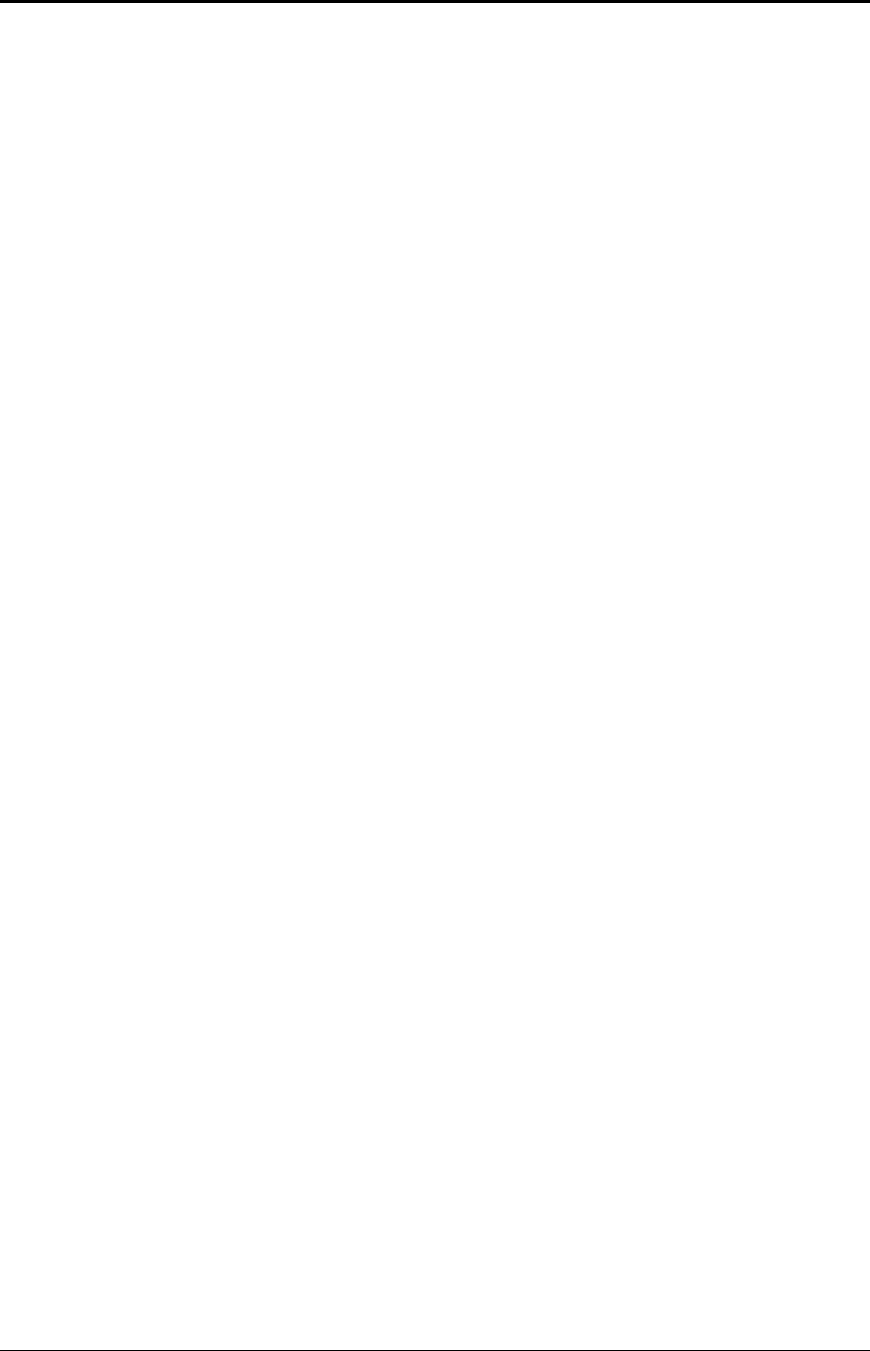
Programmer's Guide PcOS Series 150 Control Codes
Bar codes
12/14/99 Rev G Page 49
the data field defines the code set, Start Code A = <135>, Code B = <136>, and
Code C = <137>. The complete data field is printed by the printer. Due to space
limitations, only nine characters can be printed. A check digit is generated by
the printer.
Code 128 Note The “A” space is defined as a <0>, which makes programming difficult and
causes control character conflicts for the printer. To solve the problem, the
Series 150 Printer subtracts 32 from all characters that are to be included in the
bar code. In the Code 128 definition, an “A” is <33>; however, the printer will
convert an ASCII “A” (<65>) to a <33> internally. This sets Code 128C and
the start codes off by 32.
UPC A is a fixed length, numeric, continuous code that employs four element widths.
The printer supports Universal Product Code Version A, E, EAN-8, and EAN-
13. Version A encodes 11 digits. Typically, the UPC A format starts with a
number system digit, five-digit manufacturer’s code, five-digit product code,
and a check digit. The printer makes no assumptions about any of the codes
except the check digit. The printer will print a UPC bar code with the 11 digits
sent to it and generate the check digit. If fewer than 11 digits are sent, the
remaining digits will be zeroes. The printer will print a UPC that is about
130% the size of the UPC nominal standard, which provides optimal
readability.
UPC E is a zero suppression version of UPC. The printer requires that the first digit is
zero for number system zero. If it is not zero, the bar code is not printed. The
printer does the compression based on the compression rules for UPC-E. The
printer will print a UPC bar code based on the 11 digits sent to it and generate
the check digit. If fewer than 11 digits are sent, the remaining digits will be
zeroes. The printer will print a UPC that is about 130% the size of the UPC
nominal standard, which provides optimal readability.
EAN-8 is a fixed length, numeric, continuous code that employs four element widths.
The printer supports EAN-8, which is a superset of UPC that encodes seven
digits. The printer will print an EAN-8 bar code with the seven digits sent to it
and generate the check digit. If fewer than seven digits are sent, the remaining
digits will be zeroes. The printer will print an EAN-8 bar code that is about
130% the size of the nominal standard which provides optimal readability.
EAN-13 This is a fixed length, numeric, continuous code that employs four element
widths. The printer supports EAN-13 which is a superset of UPC which
encodes 12 digits. Typically, the format starts with a number set digit, which
defines how the next six digits are encoded. The next five digits have fixed
encoding. The last is a check digit. The printer will print an EAN-13 bar code
with the 12 digits sent to it and generate the check digit. If fewer than 12 digits
are sent, the remaining digits will be zeroes. The printer will print an EAN-13
bar code that is about 130% the size of the nominal standard, which provides
optimal readability.
Code 93 is an alphanumeric, variable length bar code. The complete data field is printed
by the printer. Due to space limitations, only 11 characters can be printed.
Hollerith is variable length, ASCII data that is intended for use with optical mark
readers. The printer will print a grid of encoded rectangles arranged
horizontally across the paper.
Notes A [CR] may also be used in place of the [ETX] to end the bar code data field.
Only information that is usable in a particular bar code will be printed.



